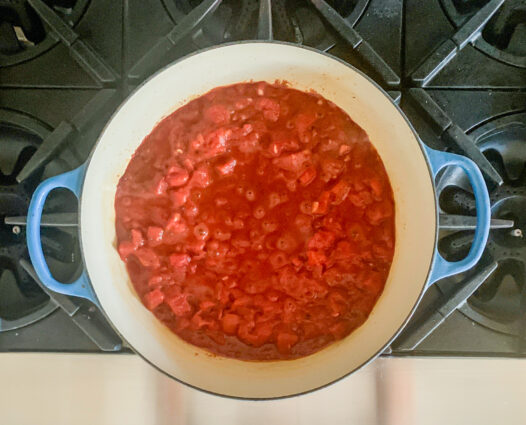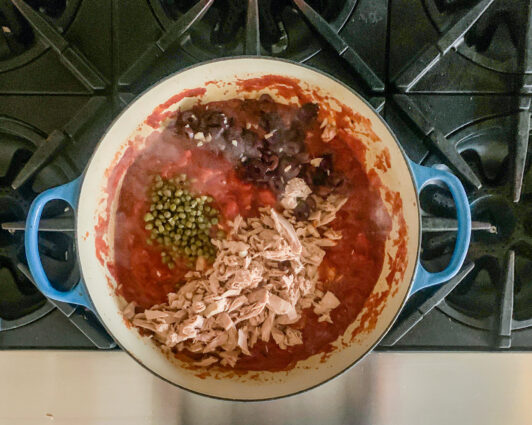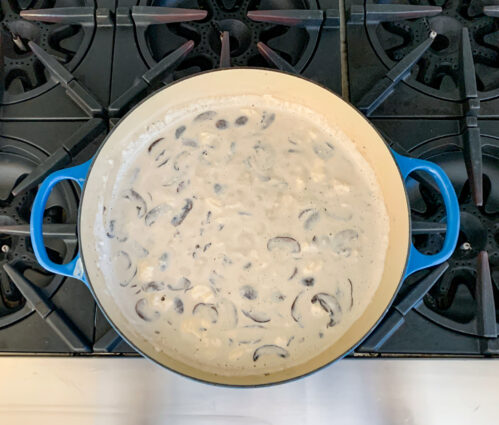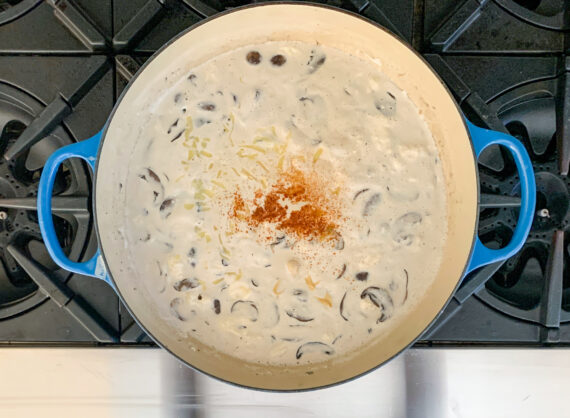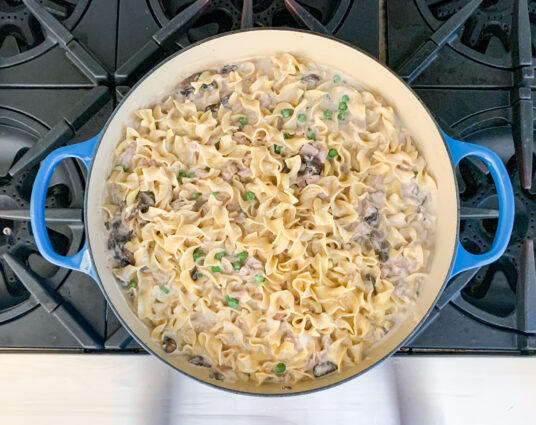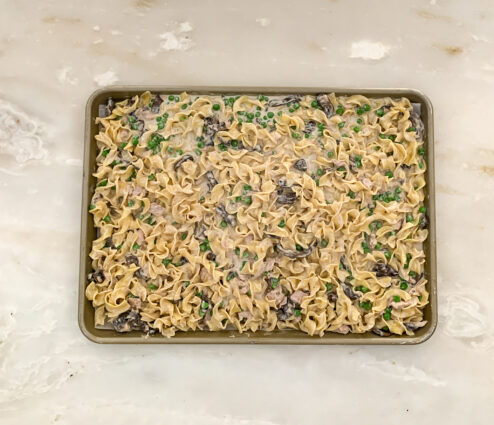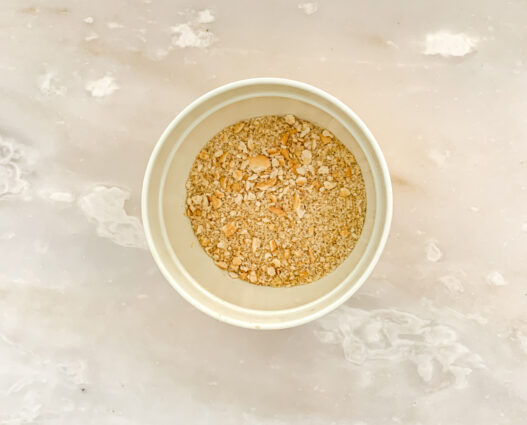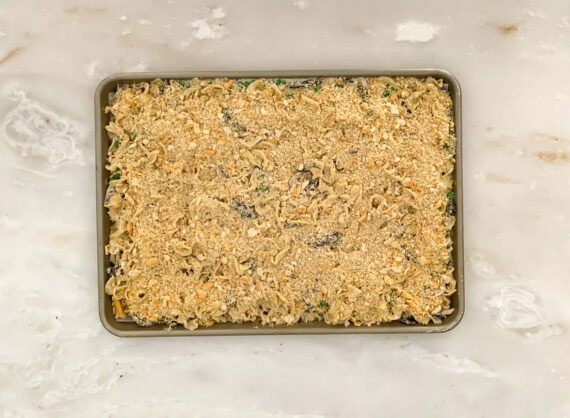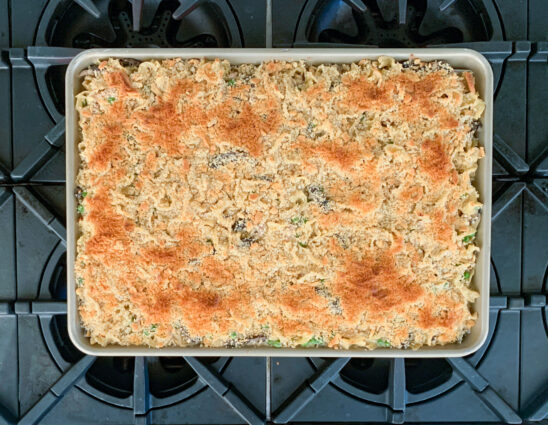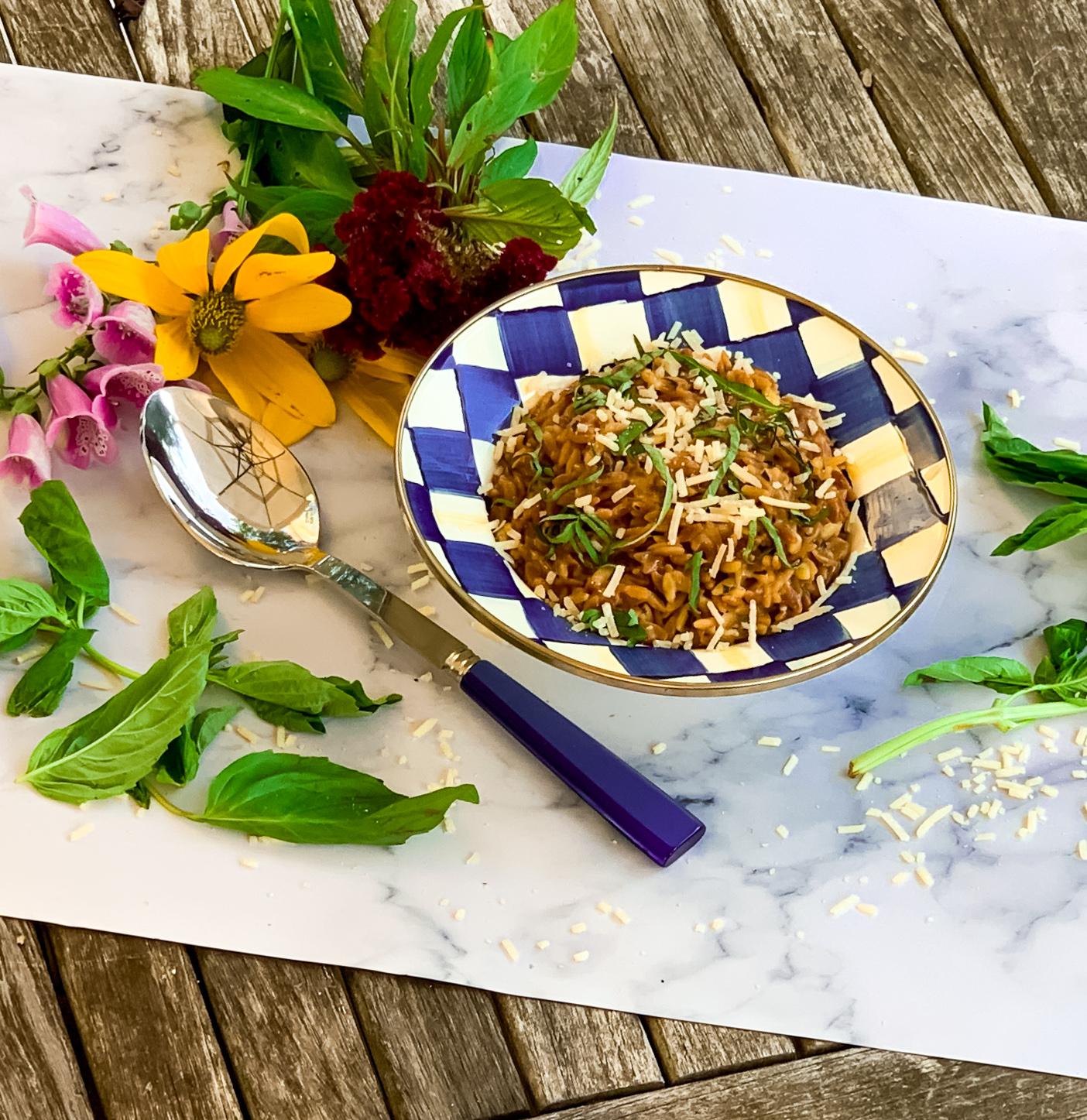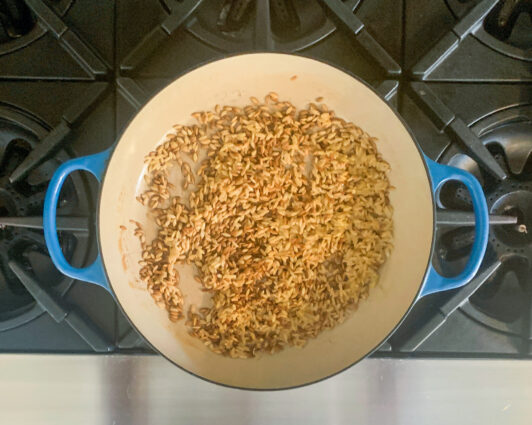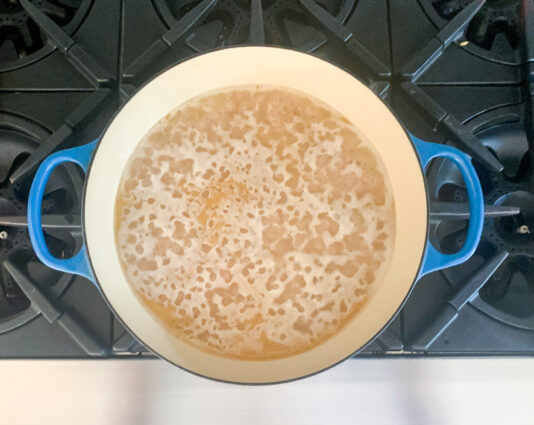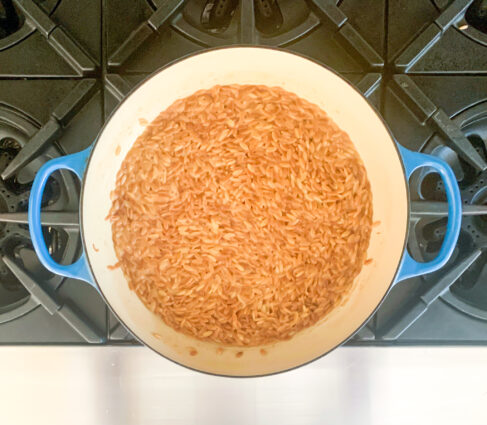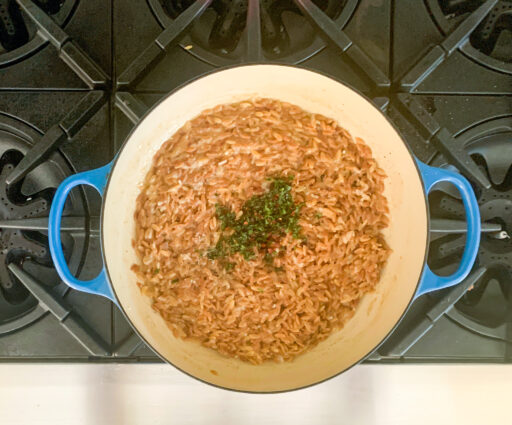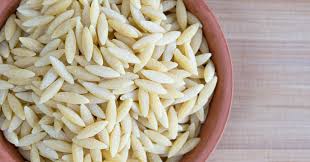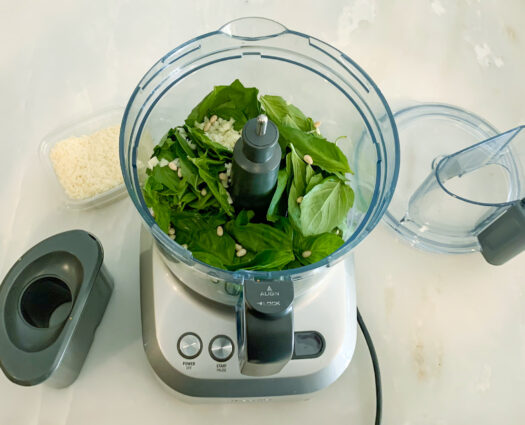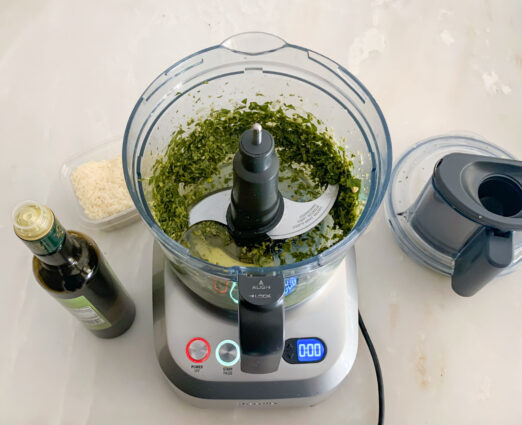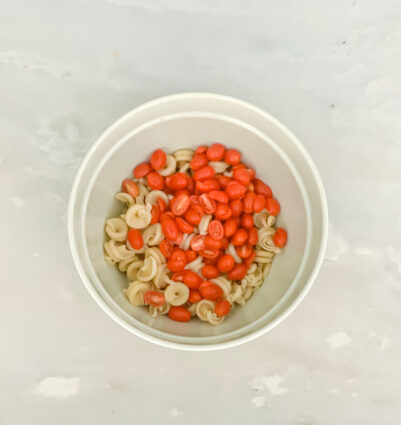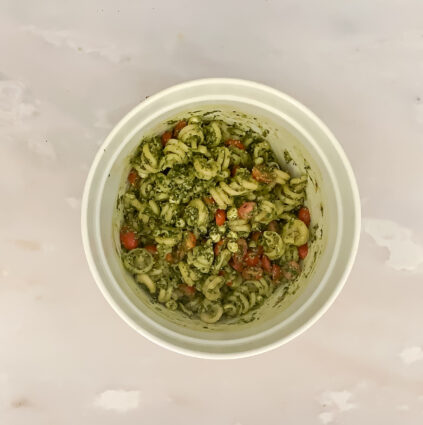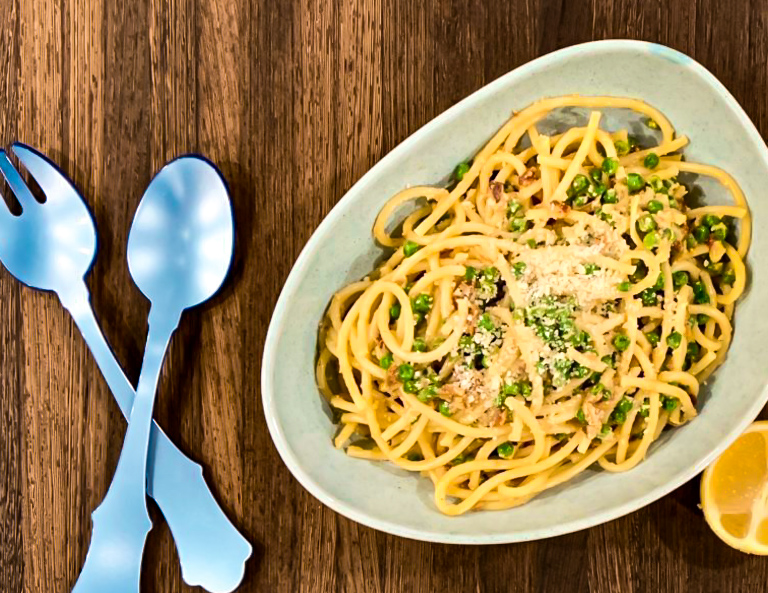
Carbonara is an Italian dish from Rome. The ingredients usually include a long pasta, such as spaghetti, fettuccine, linguine or bucatini, as well as egg, a hard cheese, and pancetta or bacon.
It never calls for cream, the eggs are the substitution for it in this dish. The eggs are cooked gently by the heat of the pasta, and becomes thick and creamy. Once the pasta is placed in the egg and cheese mixture, it must be stirred in very quickly and thoroughly to coat the pasta perfectly.
This was my second attempt at making a pasta carbonara. We won’t even mention the first time, because it wasn’t pretty, fun or edible. Second time’s the charm, I guess! Preparing this dish was not as intimidating as I thought it would be. I know many of you are probably fantastic at making this dish, but I am just a novice. I worked slowly and followed the directions carefully. To my delight, this recipe was a winner! My kids were eating this dish up as fast as I gave it to them. This is a perfect way to make a carbonara. The only thing the author left out was reserving some of the pasta water, (I am assuming she put the pasta right from the pot into the egg mixture without draining it first). So, I did add in a reminder for you to reserve a cup of the water before you go and drain it all out. The reserved water is really important because it will determine the thickness and creaminess of your sauce.
This dish is so exceptionally delicious. The bucatini becomes covered with egg and cheese mixture, adding a velvety texture to each bite. The lemon gives it a nice tang, and the Parmesan makes this dish perfect. I love the simplicity of this dish. It is perfect to make on a Sunday night served with some good garlic bread and a salad. Give this a try. It is so worth it.
This recipe is courtesy of Let’s Stay In and will serve 4 to 6 people who will think you’re a pro pasta carbonara maker, even if you aren’t!
Ingredients for Lemony Carbonara with Peas:
6 ounces pancetta or bacon, cut into 1/2-inch strips
4 garlic cloves, thinly sliced
10 ounces fresh or frozen peas
1-pound spaghetti or bucatini pasta
1 cup grated Parmesan cheese, plus more to finish
3 large eggs
1 teaspoon freshly ground black pepper. plus more to finish
2 teaspoons finely grated lemon zest, plus more to finish
3 tablespoon freshly squeezed lemon juice
Pour in enough water to fill a large Dutch oven or stock-pot halfway up, then stir enough of the sea salt to make the water taste of the sea.
Bring it to a boil.
While the water comes to a boil, crisp up the pancetta in a large skillet over medium heat. 5 to 7 minutes.
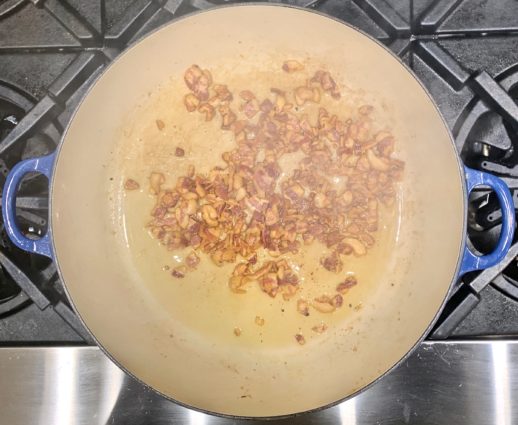
(sorry this is so smokey!)
Add the garlic and cook until golden and crisp, 3 to 4 minutes.
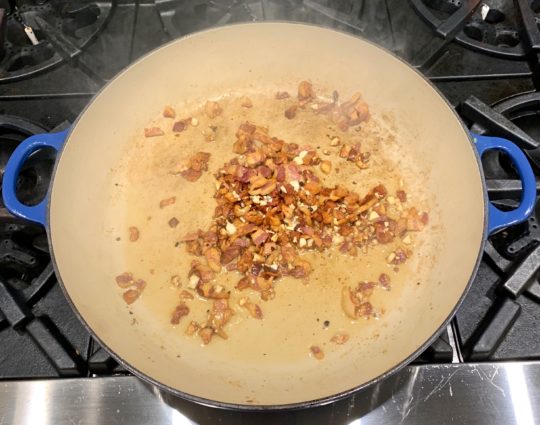
Stir in the peas and cook just until their color brightens, 1 to 2 minutes.
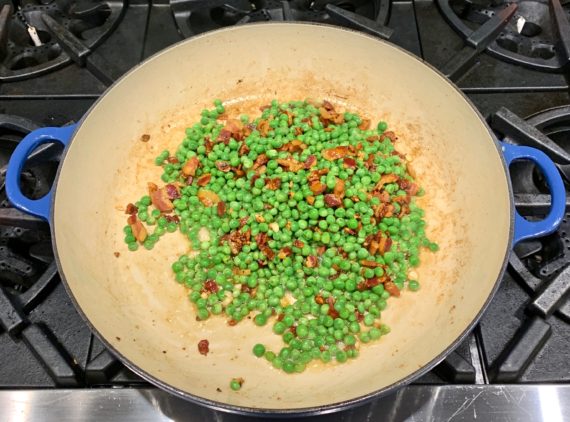
Remove from the heat.
Cook the pasta in the salted water until al dente, 10 to 12 minutes.
Reserve 1 cup of the pasta water.
In a large bowl, stir together the Parmesan, eggs, and pepper until thoroughly combined.
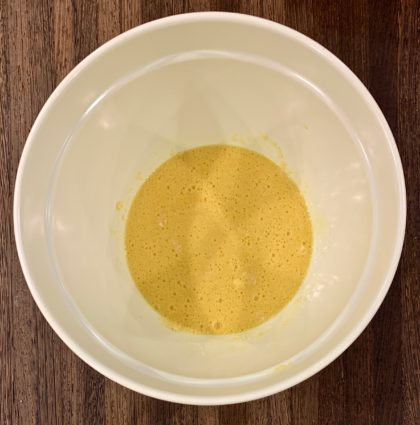
Add the hot pasta directly to the egg mixture and stir well and quickly so as not to scramble the eggs.
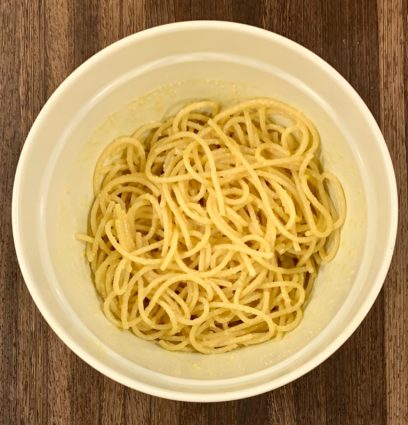
Add a bit of the pasta water as needed to create a creamy sauce.
To the pasta, add the pancetta mixture, then stir in the lemon zest and juice.
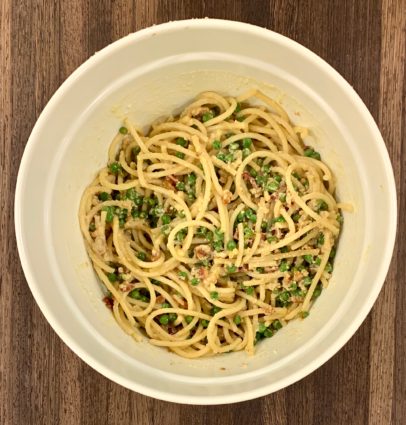
Transfer the pasta to a serving platter, then top with more grated Parmesan, lemon zest and pepper.
It’s that simple!

Mitzie and Macy

